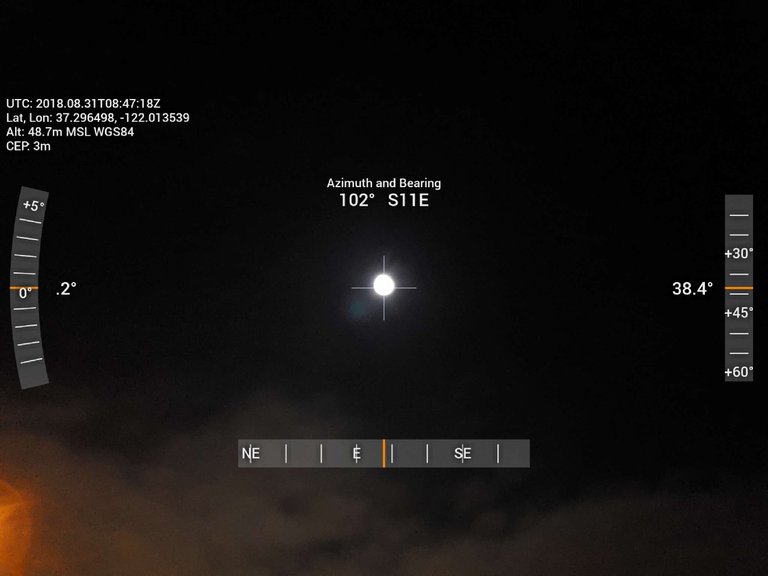The Dioptra App and the Redshift 8 planetarium software are promising tools which should have applications in doing experiments in the spherical earth vs flat earth controversy. Here’s some preliminary results testing these tools and a proposal for one way they could be used in a future experiment to test spherical vs flat earth models.
I remember getting the Redshift software for my Mac back in the mid 90s and successfully using it to predict and identify planets and stars and their positions in the night sky. There are quite a few brands of similar software on the market now, but without doing too much research I decided to go with the current premium version of Redshift now available for around $60.
So I took a sighting of the Moon with the Dioptra App on my Android Smart phone and then entered the same time and location parameters into Redshift for comparison.
Dioptra: Azimuth 102 deg magnetic & Altitude 38.4 deg
Redshift: Azimuth 114.9 deg true = 101.6 deg magnetic & Altitude 39.8 deg
This seems like pretty good agreement, but I will investigate further to determine if the results are within the experimental uncertainties expected for Dioptra and Redshift, or if there are any other explanations for the slight differences.
I plan to get a couple of friends, one over 900 miles north of me in Canada, and another almost 500 miles south of me in San Diego to take similar sightings of the Moon when high in the sky, and compare with my sightings, in order to determine if the data is consistent with the spherical earth model or a flat earth model. This should be a very simple and straightforward calculation to perform, taking into account the precise locations in terms of latitude and longitude for the sightings and also the precise times for the sightings.
I will report on those results once they are available, and I encourage others to do similar experiments and report on their results.
